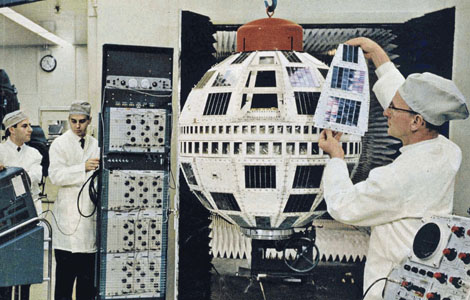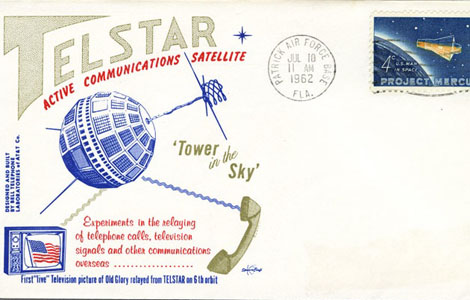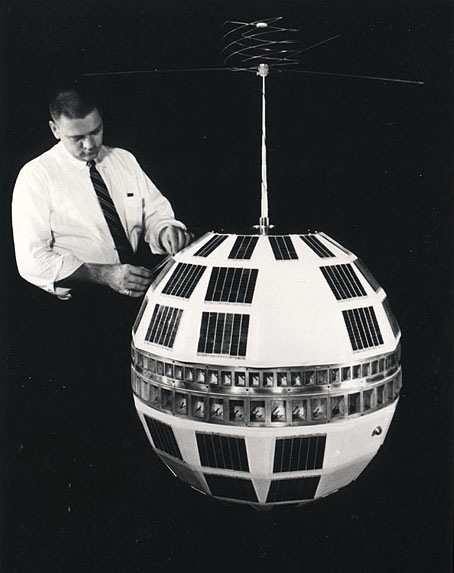Telstar Turns 50
The world’s first transatlantic TV broadcast included a quip from President Kennedy and folk dancing in Quebec.

Prelaunch checkout of the receiver that registers instructions radioed from the ground. (Photo by B. Anthony Stewart, originally published in National Geographic.
Launched 50 years ago today, Telstar (developed by Bell Telephone Laboratories for AT&T) was the first satellite to relay live TV signals.
On July 11, 1962, a ground station in Andover, Maine, sent a signal to the Telstar satellite that was processed and amplified, then resent to ground stations in the United Kingdom and France. The French station (at Pleumeur-Bodou in Brittany) reported that the images and sound came through clearly; the British station received images only.
It had been agreed that on July 23, television broadcasts between Europe and the United States would be exchanged. But the French couldn’t wait. “On July 12,” notes the National Postal Museum, “Pleumeur transmitted a seven-minute program that was carried by the American networks. It opened ‘Relax, you are in Paris!’ and featured the popular singer Yves Montand. The British scrambled to get their own program out while complaining that France had violated the broadcast agreement.”
The formal transmission on July 23 beamed President John F. Kennedy’s press conference to Europe. “I understand that part of today’s press conference is being relayed by Telstar, the communication satellite, to viewers across the Atlantic,” Kennedy said, “and this is another indication of the extraordinary world in which we live.”

In 1962, space-themed stamps and covers appeared on the market for the first time. This launch cover, part of the National Postal Museum's collections, celebrates Telstar's ascent into orbit.
The American Broadcasting Company (in cooperation with the Canadian Broadcasting Corporation) presented an 18-minute program that opened with a picture of the Statue of Liberty, then flashed to a baseball game at Chicago’s Wrigley field, before turning to Kennedy’s press conference. Astronauts John Glenn and Wally Shirra spoke briefly beside a model of the space capsule before the program switched to folk dancing in Quebec, and then traveled to Niagara Falls. The program concluded with a view of the U.N. building in New York City while the Mormon Tabernacle Choir belted out “The Battle Hymn of the Republic.”

An unidentified man poses beside the 170-pound Telstar I satellite circa early 1962. Image courtesy NASA and NASM.
The British Broadcasting Corporation began its 19-minute broadcast with a close-up of Big Ben, then raced over to the Arctic Circle so a Lapp girl could show off her reindeer calf. The broadcast then jumped over to the Champs Elysee and the Arc de Triomphe, then on to the Houses of Parliament and the Thames in London. The whirlwind tour concluded with shots of the Sistine chapel in the Vatican, and then back to the British Museum.
While Telstar’s expected lifespan was two years, in November 1962 the satellite stopped transmitting, its electronics damaged by Van Allen Belt radiation. But it is still in orbit; you can track it here.
On Thursday, July 12, the National Air and Space Museum, in collaboration with the French Embassy, will host a symposium (with a live Webcast) to commemorate the 50th anniversary of Telstar.